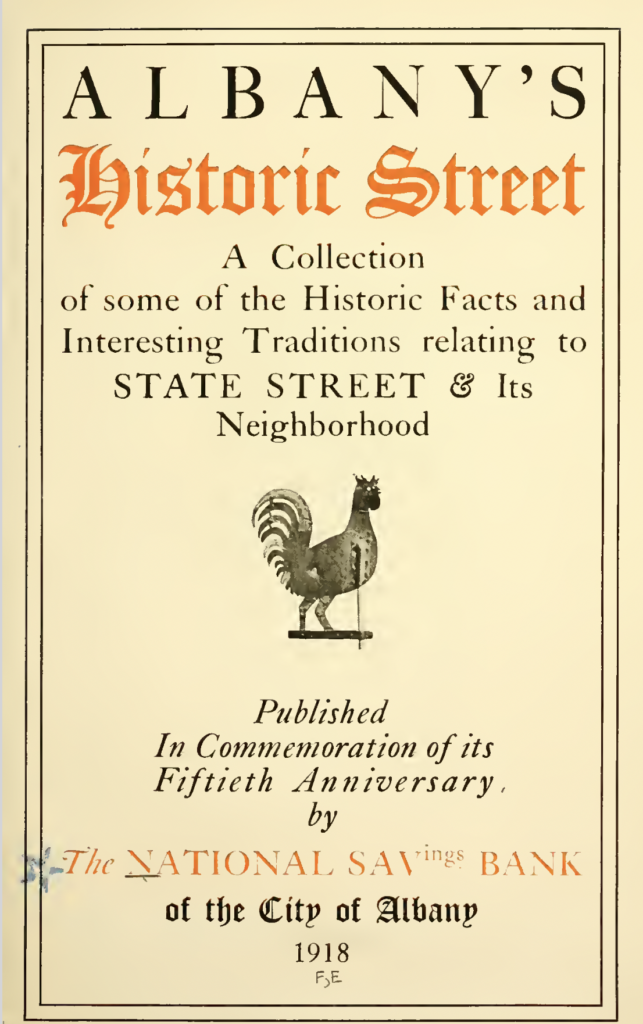The 35th tablet placed in honor of the bicentennial of Albany’s charter, in 1886, was another of the handful that simply commemorated a street: State Street. Unfortunately, this is another tablet that is long gone, but then again – we kinda know about State Street, tablet or not.
Tablet No. 35—State Street
Bronze tablet, 7×16 inches, on old Museum corner. Inscription :
“State Street, formerly Yonkers, or Gentlemen’s Street.”
The Argus reported in 1914 that this tablet was “on the State street wall of Tweddle building instead of on the Old Museum corner.” That’s unfortunate, because the building on the old Museum corner still stands at the foot of State Street (now the SUNY Research Foundation), and the Tweddle is long gone (now the anonymous office building at the northwest corner of State and North Pearl).
But as with the other “street name” markers the Bicentennial Committee chose to have cast, this one didn’t provide much information other than the former names of the city’s most important street. As Stefan Bielinski of the New York State Museum wrote, this has been Albany’s main street for more than 300 years, running from the river up to what was eventually called Fort Frederick, featuring the original Dutch Church right in the middle of the Street, the median of the street serving as the earliest marketplace. The most prominent families had homes along State Street, well before it became prized commercial property. Much of what we’ve written here in the past couple of years has been on or very near State Street.
We haven’t found any direct evidence of when it became State Street – presumably only once there was a state, which was in 1777. Or, perhaps only once Albany was the capital of said state, which was 1797. But perhaps the change was only made once there was a capitol on the street, which would have been 1808.

We could try to give an expansive history of State Street, but The National Savings Bank of the City of Albany, whose massive tower at the southwest corner of State and Pearl has significantly outlasted the bank itself, wrote up a nice little work called “Albany’s Historic Street” which does a nice little job of that, and it’s available at the Internet Archive. Having been printed in 1918, it’d be fair to assume there have been some changes in the street since then (the bank’s building being one of them), but it’s a great place to start.

Leave a Reply